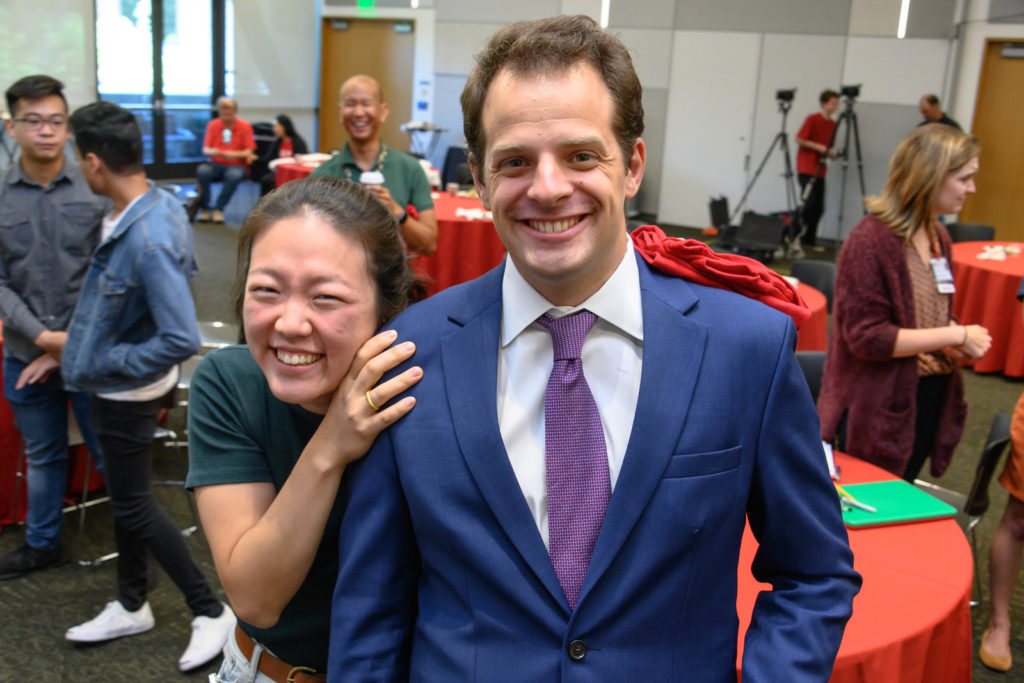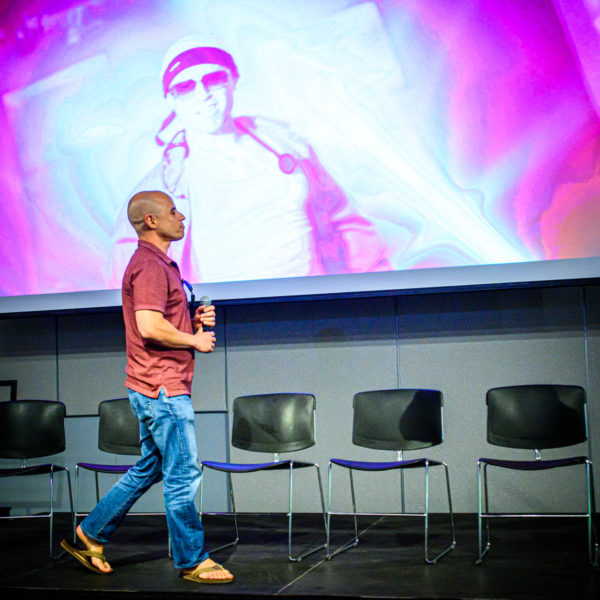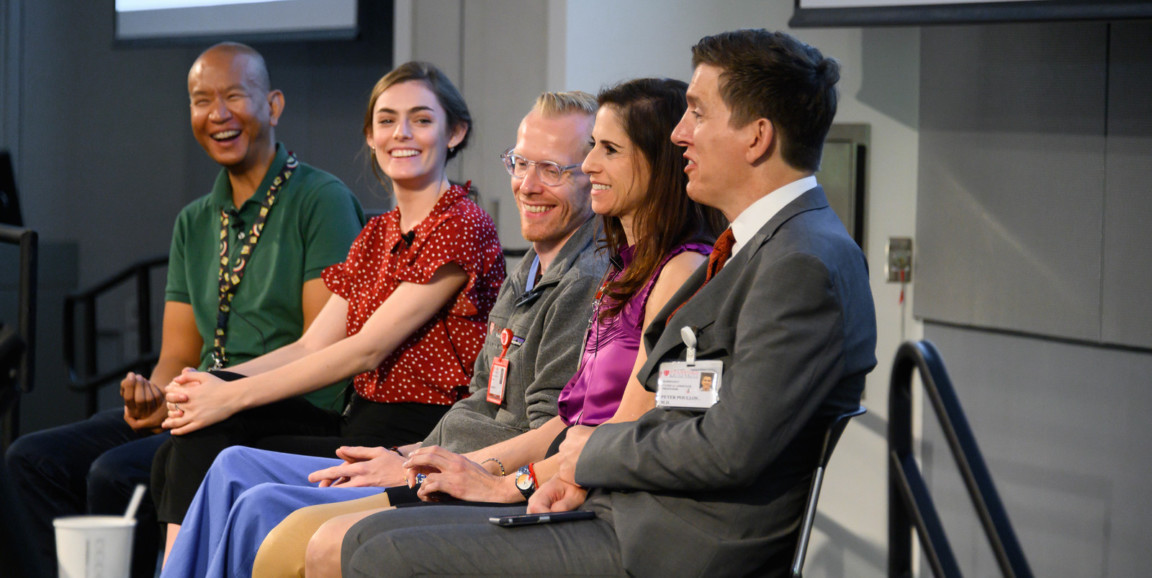Ken Sutha, MD, an instructor in pediatric nephrology, has received two kidney transplants and has undergone dialysis. Though his disability is intermittent, he says, "I have come to embrace the title disabled. There's collective power in embracing that title, in owning it."
Medical student Shayna Cooperman, who has a cochlear implant, echoed Sutha's sentiments: "I identify as being disabled," she said. "I'm quite proud of it." Sutha and Cooperman spoke at the Aug. 12 launch of the Stanford Medicine Abilities Coalition (SMAC), a group supporting those at the School of Medicine and the hospitals with disabilities. The event, which featured ZDoggMD, included a panel discussion with Stanford Medicine professionals with disabilities.
Disability -- which, according to SMAC, includes learning differences, mobility challenges, mental illness, chronic disease, deafness, blindness, autism and other differences -- is "a fundamental part of diversity," said Peter Poullos, MD, an associate professor of radiology.
Poullos, who suffered a spinal cord injury after a bicycle accident and now travels around campus on a Segway, has led Stanford Medicine in recognizing and supporting its disabled community. He successfully lobbied the School of Medicine to include disability in its diversity statement; he convinced his colleagues to include disabled members on diversity committees (he now sits on three); and he founded SMAC.

Supporting disabled people is especially critical for a health care organization, he pointed out during the discussion. "Our patients, by definition, have disabilities and illnesses they are seeking care for," Poullos noted, adding that providers with disabilities have a unique understanding of their struggles. "What if we thought of disability not as a problem to be solved but as an asset to be sought after?" he asked.
The speakers agreed that their disabilities led them to be warmer caregivers. Kip Guja, MD, a resident in radiology, said he remembers as a child with cerebral palsy what it was like to spend time in doctors' offices. "That memory drives me to do my best."
Sutha will tell his patients and their parents about his disability when he feels it will help them, he said, "even if it's just to say I understand how you have to create your schedule around dialysis." He added that he can be a role model to his adolescent patients, encouraging them to stay on their medications.
After his accident at age 30, Poullos said, "I went from being intimidating to being relatively harmless." He said his patients speak more openly with him now. For his part, he's more understanding about the effects of illness and disability on his patients. "I ask, 'How does it impact you? Tell me about your life.'"

In the next few months, SMAC will host a speaker event and a mixer; the group also plans to conduct awareness training, promote assistive technology and educate physicians on caring for patients with disabilities. SMAC is one of eight newly launched employee resource groups at Stanford Medicine.
Photos by Luke Girard / Thru Luke's Lens




